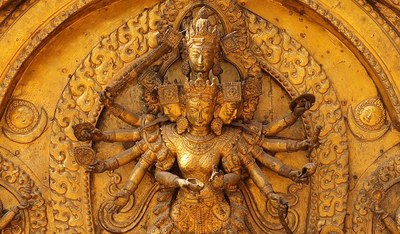Hauptinhalt
Erstedition von Ratnamatis Cāndravyākaraṇapañjikā und weitere Studien zur indischen Literatur

Projektleiter / Primary Investigator: Dragomir Dimitrov
Mitarbeiter: Mahesh Deokar, Chōjun Yazaki, Anett Krause
One of the main objectives of this Heisenberg programme funded by the German Research Foundation (DFG) was the preparation of an editio princeps of selected parts of Ratnamati’s Cāndravyākaraṇapañjikā c. 920s–930s AD), the most extensive exegetical work in the Sanskrit grammatical tradition established by the Buddhist grammarian Candragomin in the fifth century AD. The most substantial contribution to the study of this remarkable tradition was made more than a hundred years ago by the German Indologist Bruno Liebich (1862–1939) who in the course of his pioneer studies of Candragomin’s concise, comprehensible, and complete (laghu-vispaṣṭa-saṃpūrṇa) system first edited the root text of this school (Cāndrasūtra published in 1902) followed by an edition of Dharmadāsa’s commentary on it (Cāndravr̥tti published in 1918). Since the appearance of these two exemplary works, however, until recently hardly any other grammatical text belonging to the same system has been properly studied and published, even though since the early 1970s at the latest a substantial number of Nepalese manuscripts containing such texts became available and easily accessible. After several decades of almost complete neglect of the Cāndra school, in the late 1980s Thomas Oberlies made the first attempts to revive the scholarly interest towards it. By the turn of the twenty-first century it was already clear that much more work needs to be done in order to «unearth» and save from oblivion several later commentaries on the Cāndravyākaraṇa, particularly Ratna’s Cāndravyākaraṇapañjikā which has proved to be most authoritative and influential.
Ratna’s extensive subcommentary takes in the Cāndra system the same position which Jinendrabuddhi’s Nyāsa has in the Pāṇinean tradition. The significance of Ratna’s works is greatly enhanced by the fact that its author knew in detail the entire Pāṇini system and very often argued directly or indirectly against the Nyāsa in an attempt to justify the positions taken in Candragomin’s system of grammar. Moreover, Ratna’s learned work has exerted substantial influence on later grammarians, especially in the twelfth-fourteenth centuries, not only in northern India, but also in Sri Lanka and Burma. The direct access to the Cāndravyākaraṇapañjikā is thus indispensable for the proper understanding of a hitherto poorly studied corpus of post-tenth century grammatical literature and does also help significantly to prepare a better edition of Dharmadāsa’s Cāndravr̥tti which should ultimately supplant Liebich’s pioneer work.
Within the same Heisenberg programme other more or less related projects were also conducted, such as "Studies of Moggallāna’s Moggallānapañcikā and Dhammasenāpati’s Kārikā", "Critical edition and translation of Candragomin’s Śiṣyalekha", "Critical edition and translation of the Maitreyavyākaraṇa", "Studies of Saindhavī Buddhist literature", "An edition of a partial Kashmiri translation of Cervantes’s Don Quixote", "Bruno Liebich – Leben und Werke eines schlesischen Indologen".